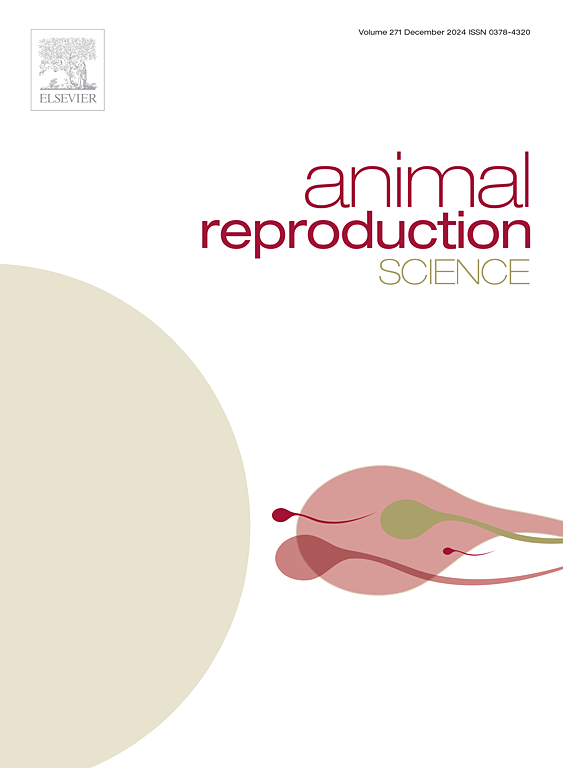破解生殖微生物群如何有助于野生哺乳动物物种的保护——综述
IF 3.3
2区 农林科学
Q1 AGRICULTURE, DAIRY & ANIMAL SCIENCE
引用次数: 0
摘要
微生物组的研究取得了显著进展,揭示了它们对宿主健康和生殖的深远影响。尽管人类和家养动物的研究取得了进展,但关于野生哺乳动物的生殖微生物群,特别是它们对生育力和配子活力的影响,仍然存在实质性的知识差距。这些微生物群落的特征对于制定有效的保护策略至关重要。本文综述了野生哺乳动物生殖微生物组的研究现状,详细介绍了鉴定技术(16S rRNA基因测序、MALDI-TOF质谱)以及区分“微生物组”和“微生物群”。它检查了两性的生殖微生物群,包括半阴道相互作用,突出了它们在生殖健康中的作用,并从跨物种比较中得出结论。该综述还解决了关键的研究空白,例如特定微生物分类群的功能作用、宿主-微生物特异性、纵向动力学以及大象和海洋哺乳动物等物种的雄性生殖健康有限数据。此外,本研究还探索了基于微生物组的诊断和治疗(如益生菌、微生物群转移),以改善生殖结果和减轻生态失调等威胁。我们也承认在野生物种采样和操作方面存在独特的后勤和伦理挑战,包括污染和个体间变异。通过整合这些见解,该综述为保护野生动物和培育更健康的野生种群提供了一个新的微生物视角。本文章由计算机程序翻译,如有差异,请以英文原文为准。
How deciphering the reproductive microbiomes can contribute to the conservation of wild mammalian species – A review
The study of microbiomes has significantly advanced, revealing their profound influence on host health and reproduction. Despite progress in human and domestic animal research, a substantial knowledge gap persists regarding reproductive microbiomes in wild mammals, particularly their impact on fertility and gamete viability. Characterizing these microbial communities is crucial for developing effective conservation strategies. This narrative review focuses on current research about reproductive microbiomes in wild mammals, detailing identification techniques (16S rRNA gene sequencing, MALDI-TOF MS) and distinguishing "microbiome" from "microbiota." It examines reproductive microbiota in both genders, including semino-vaginal interactions, highlighting their roles in reproductive health and drawing from cross-species comparisons. The review also addresses critical research gaps, such as the functional roles of specific microbial taxa, host-microbe specificity, longitudinal dynamics, and limited data on male reproductive health in species like elephants and marine mammals. Furthermore, this work explores microbiome-based diagnostics and treatments (e.g., probiotics, microbiota transfers) to improve reproductive outcomes and mitigate threats like dysbiosis. We also acknowledge unique logistical and ethical challenges in wild species sampling and manipulation, including contamination and inter-individual variability. By integrating these insights, the review offers a novel, microbial perspective for preserving wildlife and fostering healthier wild populations.
求助全文
通过发布文献求助,成功后即可免费获取论文全文。
去求助
来源期刊

Animal Reproduction Science
农林科学-奶制品与动物科学
CiteScore
4.50
自引率
9.10%
发文量
136
审稿时长
54 days
期刊介绍:
Animal Reproduction Science publishes results from studies relating to reproduction and fertility in animals. This includes both fundamental research and applied studies, including management practices that increase our understanding of the biology and manipulation of reproduction. Manuscripts should go into depth in the mechanisms involved in the research reported, rather than a give a mere description of findings. The focus is on animals that are useful to humans including food- and fibre-producing; companion/recreational; captive; and endangered species including zoo animals, but excluding laboratory animals unless the results of the study provide new information that impacts the basic understanding of the biology or manipulation of reproduction.
The journal''s scope includes the study of reproductive physiology and endocrinology, reproductive cycles, natural and artificial control of reproduction, preservation and use of gametes and embryos, pregnancy and parturition, infertility and sterility, diagnostic and therapeutic techniques.
The Editorial Board of Animal Reproduction Science has decided not to publish papers in which there is an exclusive examination of the in vitro development of oocytes and embryos; however, there will be consideration of papers that include in vitro studies where the source of the oocytes and/or development of the embryos beyond the blastocyst stage is part of the experimental design.
 求助内容:
求助内容: 应助结果提醒方式:
应助结果提醒方式:


